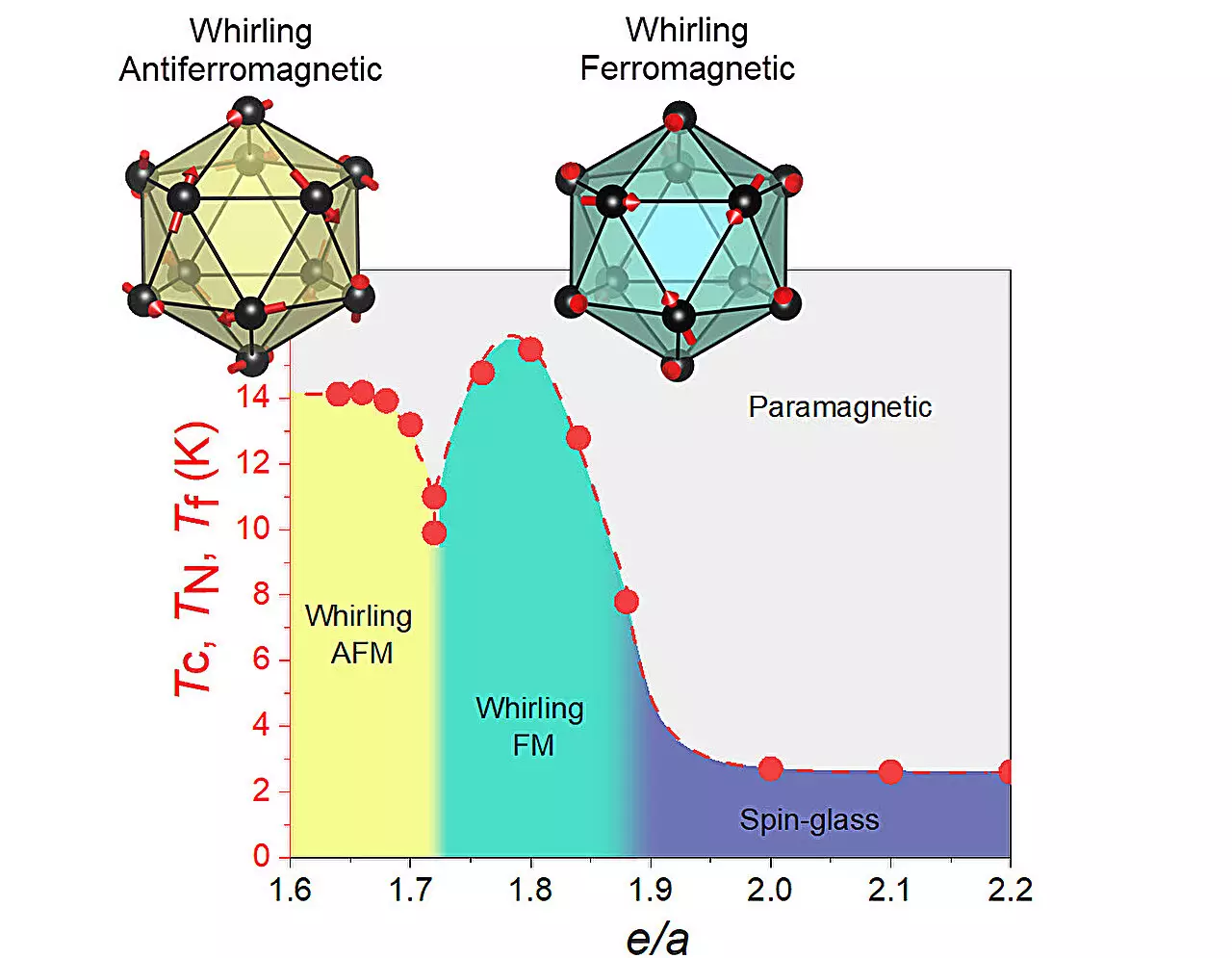Quasicrystals have become a focal point for researchers in the field of condensed matter physics as they offer unique properties not found in normal crystals. These intermetallic materials have non-repeating ordered patterns of atoms, unlike the regular and repeating patterns seen in conventional crystals. Among the various quasicrystal variants, the Tsai-type icosahedral quasicrystal (iQC) and their cubic approximant crystals (ACs) are particularly fascinating due to their intriguing characteristics, such as long-range ferromagnetic (FM) and anti-ferromagnetic (AFM) orders. These materials also exhibit unconventional quantum critical phenomena, making them useful for practical applications in spintronics and magnetic refrigeration.
Despite the potential of Tsai-type 1/1 gold-gallium-terbium ACs, their magnetic phase diagram remains largely unexplored. To shed light on this subject, a team of researchers led by Professor Ryuji Tamura from the Department of Materials Science and Technology at Tokyo University of Science (TUS) collaborated with researchers from Tohoku University to conduct magnetization and powder neutron diffraction (PND) experiments on these materials.
The experiments conducted by the research team resulted in the development of the first comprehensive magnetic phase diagram for Tsai-type 1/1 gold-gallium-terbium ACs. This diagram covers a wide range of electron-per-atom (e/a) ratios, which is a crucial parameter for understanding the fundamental nature of quasicrystals.
The researchers utilized powder neutron diffraction (PND) to further examine the properties of the Tsai-type quasicrystals. The PND measurements revealed the presence of a noncoplanar whirling AFM order at an e/a ratio of 1.72 and a noncoplanar whirling FM order at an e/a ratio of 1.80. This observation provides valuable insights into the ferromagnetic and anti-ferromagnetic phase selection rules of magnetic interactions.
Professor Tamura emphasizes that these findings open up exciting possibilities for the future of condensed matter physics research. The intricate interplay between magnetic interactions in non-Heisenberg Tsai-type ACs can now be better understood, setting the stage for exploring the intriguing properties of other non-Heisenberg ACs and iQCs that are yet to be discovered.
The discovery and understanding of the magnetic phase diagram of Tsai-type 1/1 gold-gallium-terbium ACs have significant implications for the development of advanced electronic devices and next-generation refrigeration technologies. By unraveling the complex magnetic behaviors of these materials, researchers can pave the way for innovations in applied physics, particularly in magnetic refrigeration and spintronics.
The groundbreaking experiments conducted by Professor Tamura and his team shed light on the previously unexplored magnetic phase diagram of Tsai-type 1/1 gold-gallium-terbium ACs. By investigating the ferromagnetic and anti-ferromagnetic phase selection rules, the researchers gained crucial insights into the behavior of these quasicrystals. These discoveries propel the field of condensed matter physics and quasicrystal research into uncharted territories, opening up new avenues for technological advancements in various fields. The potential applications of this research extend to advanced electronic devices and next-generation refrigeration technologies, positioning Tsai-type 1/1 gold-gallium-terbium ACs as a promising material for future scientific and technological breakthroughs.


Leave a Reply